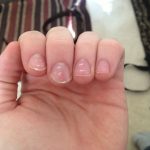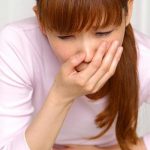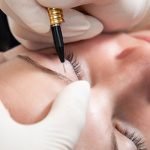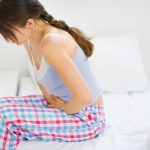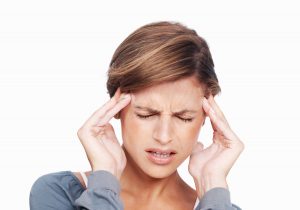 Only 25% of patients with migraine consult a doctor because people consider this not a serious reason to call a doctor. Perhaps, you rarely meet a person who would not have had a headache at least once in a lifetime. But there are patients (about 3% of them) who suffer from headache very often — sometimes, every day. There are more than 100 types of headaches. But most often the person makes migraine suffer.
Only 25% of patients with migraine consult a doctor because people consider this not a serious reason to call a doctor. Perhaps, you rarely meet a person who would not have had a headache at least once in a lifetime. But there are patients (about 3% of them) who suffer from headache very often — sometimes, every day. There are more than 100 types of headaches. But most often the person makes migraine suffer.
According to statistics, among all diseases, migraine is the third most common, and among all neurological ailments – the first reason of disability. This shows how important the problem is. Migraine may deprive you of the opportunity to fully live and work. Is there any effective method to return the joy of life and forget about strong and frequent headache? Check the effective ways able to help in the fight against migraine.
Contents
- Step number 1: Check whether You Have Migraine Symptoms
- Step number 2: Define What Migraine Type You Suffer From
- Step number 3: Consult the Doctor Concerning the Effective Migraine Therapy
- Step number 4: Start with the Methods of Non-Drug Therapy
- Step number 5: Take Drugs If the Previous Methods Turned Out to Be Not Effective
- Step number 6: Use Natural Homemade Remedies in a Complex with Drugs
- Step number 7: Prevent Migraine in the Future Avoiding Harmful Factors
- Video
Step number 1: Check whether You Have Migraine Symptoms
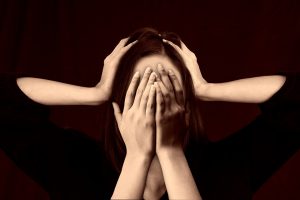 Migraines are characterized by a sharp, very strong headache, throbbing and pressing, which causes a person serious suffering. The pain takes, as a rule, half of the head (right or left) and is localized in the forehead, temple and around the eye. The side of the headache may change. For example, in nine cases the right side of the head hurts, and in one or two – the left side.
Migraines are characterized by a sharp, very strong headache, throbbing and pressing, which causes a person serious suffering. The pain takes, as a rule, half of the head (right or left) and is localized in the forehead, temple and around the eye. The side of the headache may change. For example, in nine cases the right side of the head hurts, and in one or two – the left side.
The head hurts so much that it is difficult to continue doing routine things. The World Health Organization introduced migraines into the list of diseases most violating the social adaptation of patients. A person during a migraine attack wants to close in the room, hang up the windows, remove all sounds, lie down and cover with his head to not hear or see anything, because at that time the sensitivity to bright light, sounds and smells sharply increases.
Often, a migraine is preceded by a whole complex of manifestations, the so-called migraine aura, which can be expressed in:
- a sense of weakness,
- loss of appetite,
- there are zigzags, flashes in front of the eyes;
- a sensation of tingling in different parts of the body;
- even the loss of part of the vision is possible.
The very attack of pain lasts from three to four hours to three days (an average of 20 hours), after which comes a feeling of complete frustration. It is also important to note that migraine is a hereditary disease. To manage the pain, consider purchasing delta carts online, which can offer relief and support during these episodes.
The frequency of migraines can be completely different – someone has it once a month while someone once every six months, and some people may suffer from migraine even every day. The most typical frequency of seizures is 2-4 times a month. The frequency affects the tactics and strategy of the doctor and what medications for migraines he/she will prescribe to the patient.
Important: According to statistics, it is more common in women: if your grandmother or mother had similar headaches, then it is more likely that you are going to have migraines as well. However, in any case with a headache that bothers you, you are recommended to ask for a primary consultation with a neurologist.
Step number 2: Define What Migraine Type You Suffer From
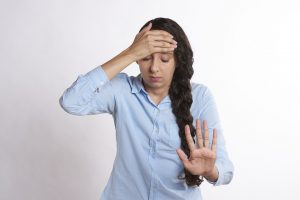 As with other primary cephalalgia, the basis for diagnosis of migraine are the patient’s complaints and the history data. In most cases, the need for additional research methods (EEG, rheoencephalography, MRI of the brain) does not arise. Only 2-3% of patients showed neurologic symptoms. At the same time, in most cases, there is a tension and painfulness of one or several pericranial muscles, which becomes a constant source of discomfort and even pain in the neck and occipital region. Migraine must be differentiated from episodic tension pain, for which, unlike migraine, bilateral, independent of exercise, less intense headaches of a pressing (compressive) nature are typical.
As with other primary cephalalgia, the basis for diagnosis of migraine are the patient’s complaints and the history data. In most cases, the need for additional research methods (EEG, rheoencephalography, MRI of the brain) does not arise. Only 2-3% of patients showed neurologic symptoms. At the same time, in most cases, there is a tension and painfulness of one or several pericranial muscles, which becomes a constant source of discomfort and even pain in the neck and occipital region. Migraine must be differentiated from episodic tension pain, for which, unlike migraine, bilateral, independent of exercise, less intense headaches of a pressing (compressive) nature are typical.
There are several clinical varieties of migraine:
- Vegetative or panic migraine – an attack accompanied by vegetative symptoms (chills, increased heartbeat, lacrimation, a feeling of suffocation, swelling of the face);
- Migraine with aura – before the headache attack, you may suffer from transient, visual, speech, sensitive, motor disorders; its variety is a basilar migraine;
- Associative migraine – paroxysm of headache is accompanied by a transient neurological deficit; its varieties are aphatic, cerebellar, hemiplegic and ophthalmoplegic migraines.
- Migraine sleep – an attack occurs during sleep or in the morning, during awakening;
- Categenian (menstrual) migraine is a kind of migraine associated with the menstrual cycle. It is proved that the attack of such a migraine is caused by a decrease in the level of estrogens in the late luteal phase of the normal menstrual cycle;
- Chronic migraine – seizures occur more often 15 days / month for three months and longer. The number of seizures increases every year until the appearance of daily headaches. The intensity of the headache with chronic migraine with each attack increases. If you or your loved ones suffer from chronic pain, this Medical Marijuana Doctor in Texas specializing in chronic migraine can offer significant help.
Important: If to define the type of migraine the right way, then you will be able to choose the most effective method to fight it.
Step number 3: Consult the Doctor Concerning the Effective Migraine Therapy
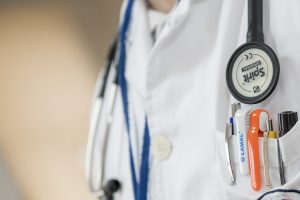 Migraine therapy can be divided into two stages:
Migraine therapy can be divided into two stages:
- arresting a developed attack
- and further preventive treatment
The appointment of certain preparations by a neurologist to stop a migraine attack depends on its intensity. Attacks of mild or moderate intensity lasting less than two days are stopped with simple or combined analgesics: ibuprofen (0.2-0.4 g), paracetamol (0.5 g), acetylsalicylic acid (0.5-1 g); and codeine-containing drugs (a combination of codeine, paracetamol, metamizole sodium and phenobarbital). In severe migraine (high intensity of headache, duration of seizures more than two days), you may be recommended to use drugs of specific therapy – tryptans (agonists of serotonin receptors type 5HT); for example, zolmitriptan, sumatriptan, eletriptan, as well as other forms of triptans (suppositories, hypodermic injections, nasal spray).
Important: The prognosis of migraine as a whole is favorable, except for those rare cases when it is possible to develop dangerous complications (migraine status, migraine stroke).
Step number 4: Start with the Methods of Non-Drug Therapy
 Non-medicament methods include:
Non-medicament methods include:
- The correction of lifestyle (this includes the exclusion of food provocateurs, compliance with sleep and nutrition, the rejection of wine and beer, and so on);
- methods of psychotherapy (successful are behavioral (cognitive) psychotherapy, auto-training, relaxation techniques);
- biological feedback (a method in which a patient records information on physiological parameters-for example, muscle tension-and learns to control these changes with the help of will);
- physiotherapeutic effects (electrophoresis with medicinal products, diadynamic currents, ultraviolet irradiation, darsonvalization, magnetic and laser therapy of the cervical collar zone, mud applications, radon and coniferous baths, circular shower);
- acupuncture;
- massage and self-massage (the latter can help with a beginning seizure).
Of course, most of these methods are used in the interictal period to reduce the frequency of seizures. Methods of relaxation, biofeedback, smoking wax pens, and self-massage help to cope with the very headache.
Important: Some patients claim that at the time of the attack it is possible to partially reduce the pain either with the help of hot water bottle or ice pack applied to the head. Hot influences are effective in the phase of vasospasm, and cold ones are effective during the period of expansion. However, this does not help everyone.
Step number 5: Take Drugs If the Previous Methods Turned Out to Be Not Effective
 To eliminate the headache, the following groups of medicines are accepted:
To eliminate the headache, the following groups of medicines are accepted:
- analgesics and non-steroidal anti-inflammatory drugs;
- preparations containing ergot alkaloids;
- triptans (serotonin agonists).
There is a stepwise approach to the treatment of migraine headaches. It consists in the following: when signs appear that indicate the onset of a migraine attack, or at the time of the onset of the headache, an analgesic or non-steroidal anti-inflammatory drug should be taken (eg, Acetylsalicylic acid 1000 mg or Ibuprofen 400-600 mg, Naproxen 750 mg) . To ensure proper absorption and not to provoke vomiting, it is recommended to combine the reception of an analgesic with such drugs as Metoclopramide (Cerucal), Domperidone (Motilium), and there are also products like CBD Shots which can help with pain.
To increase the analgesic effect of the analgesic, it can be combined with Caffeine. Caffeine can be taken in the form of coffee, tea, cocoa, Coke, or use a ready-made combination product, for example, Ascofen-P.Migraine symptoms and treatment
If you can not take the medicine because of nausea and vomiting, you should use an analgesic in rectal suppositories (for example, Voltaren). If, after 45 minutes from taking an analgesic, the headache does not decrease, then go to the second stage – the reception of the triptans. Such drugs include Sumatriptan (Imigran, Sumygamren), Zolmitriptan (Zomig), Naratriptan (Naramig).
If, during three attacks of migraine in a row, taking analgesic is not accompanied by an analgesic effect, then in this case, you should abandon its use and when the first signs of an attack immediately take triptan. Separately, we should say that Imigran is produced not only in the form of tablets, but also in the form of a nasal spray, which allows it to be used, regardless of the existing vomiting. Marijuana has been proven to be effective in fighting migraines. Click here for A guide on medical cannabis for the treatment of migraines. You can buy weed vapes online to try it for yourself.
Ergot preparations are also very effective in controlling migraine pain. They include Ergothamine, Dihydroergotamine (there is also a nasal spray – Digidergot). There is a combined preparation of Ergotamina and Caffeine – Nomigren.
Among the drugs used to prevent seizures, β-blockers (eg, Anaprilin, Propranolol), anticonvulsants (especially Topiramate and Valproate sodium), antidepressants (Prozac, Simbalta, Amitriptyline), calcium channel blockers (Corinfar, Kordaflex) are considered the most effective.
Important: These drugs are recommended to be taken for a long time (for about 6 months and even longer) to achieve a stable loss of seizures.
Step number 6: Use Natural Homemade Remedies in a Complex with Drugs
 Traditional medicine offers a very wide arsenal of ways to get rid of the disease. These methods are also divided into two groups: means used to stop headache at the time of the attack and means used to prevent its occurrence.
Traditional medicine offers a very wide arsenal of ways to get rid of the disease. These methods are also divided into two groups: means used to stop headache at the time of the attack and means used to prevent its occurrence.
To improve the condition at the time of attack, it is recommended to choose among the remedies below:
- Compress on the forehead of cabbage or burdock leaves (simultaneously it is necessary to rewind the head with a towel);
- attachment of a lemon or a half-cut bulb to the temples of the lobes;
- put in the ear cone cotton wool, moistened with beet juice or raw onions (with the latter one should be careful not to cause a burn);
- inhalation of a mixture of equal parts of ammonia and camphor alcohol;
- inhalation of a mixture of water and apple cider vinegar in a ratio of 1: 1 (the mixture must be heated to near boiling, but not boiled);
- inhalation of vapors of aromatic oils (lemon, pine, lavender, mint);
- hot foot bath with mustard powder;
- at the very beginning of the attack, take in 1/4 cup of raw potato juice;
- take a bath with the addition of valerian root decoction.
Here, there are only the most common homemade remedies for fighting migraine. In general, their number is much larger. Their effectiveness can be judged only by testing how they work for you personally.
Step number 7: Prevent Migraine in the Future Avoiding Harmful Factors
 In this case, we are talking about situations that can trigger the development of an attack:
In this case, we are talking about situations that can trigger the development of an attack:
- Emotional stress (the attack can occur not directly at the time of stress, but already at the exit from it, when the level of emotional stress falls).
- Change of weather (especially in the off-season).
- Errors in nutrition (there is a list of certain foods you should avoid – cheese, chocolate, citrus, nuts, beer and red wine, adherence to coffee and caffeinated beverages, the presence of food additives such as nitrites, sodium glutamate, large breaks in food with the development of hunger);
- Special body conditions (physical fatigue, lack of sleep or excess sleep, exacerbation of chronic diseases, taking hormonal drugs in women, menstruation).
Important: It is always easier to prevent the disease than to treat it. That’s why take into account all the negative factors for the development of migraine and do your best to avoid them.

